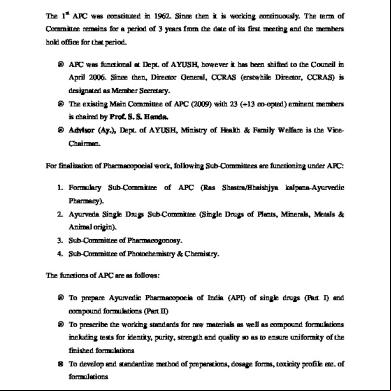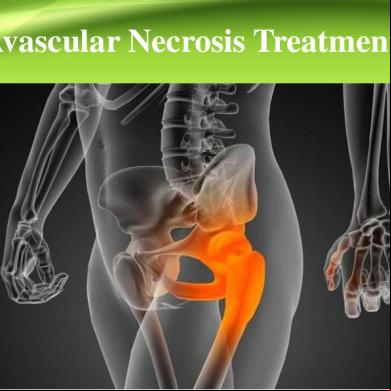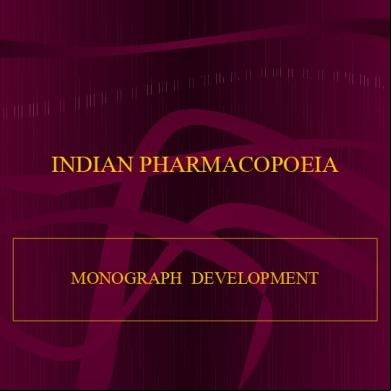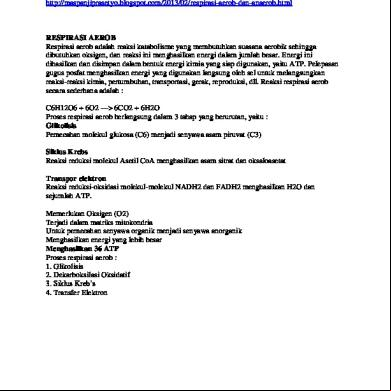Ayurved Pharmacopoeia Notes 5a6966
This document was ed by and they confirmed that they have the permission to share it. If you are author or own the copyright of this book, please report to us by using this report form. Report 3b7i
Overview 3e4r5l
& View Ayurved Pharmacopoeia Notes as PDF for free.
More details w3441
- Words: 855
- Pages: 4
Ayurvedic Pharmacopoeia Committee The 1st APC was constituted in 1962. Since then it is working continuously. The term of Committee remains for a period of 3 years from the date of its first meeting and the hold office for that period. APC was functional at Dept. of AYUSH, however it has been shifted to the Council in April 2006. Since then, Director General, CCRAS (erstwhile Director, CCRAS) is designated as Member Secretary. The existing Main Committee of APC (2009) with 23 (+13 co-opted) eminent is chaired by Prof. S. S. Handa. Advisor (Ay.), Dept. of AYUSH, Ministry of Health & Family Welfare is the ViceChairman. For finalization of Pharmacopoeial work, following Sub-Committees are functioning under APC: 1. Formulary Sub-Committee of APC (Ras
Shastra/Bhaishjya kalpana-Ayurvedic
Pharmacy). 2. Ayurveda Single Drugs Sub-Committee (Single Drugs of Plants, Minerals, Metals & Animal origin). 3. Sub-Committee of Pharmacogonosy. 4. Sub-Committee of Photochemistry & Chemistry. The functions of APC are as follows: To prepare Ayurvedic Pharmacopoeia of India (API) of single drugs (Part I) and compound formulations (Part II) To prescribe the working standards for raw materials as well as compound formulations including tests for identity, purity, strength and quality so as to ensure uniformity of the finished formulations To develop and standardize method of preparations, dosage forms, toxicity profile etc. of
formulations
To identify methods and procedures for publication of the standards of all commonly used formulations of AFI in a phased manner. To provide all other information on Ayurvedic formulations regarding the distinguishing characteristics, methods of preparation, dosage, method of istration with various anupans or vehicles and their toxicity To develop the Quality standards, safety, efficacy profile of different parts of the plants; as well as inclusion of new plants as Ayurvedic drugs Any other matter relating to the quality standards, shelf life, identification, new formulations etc. To develop Quality standards, safety, efficacy profile of Intermediates like extracts of plant drugs used in Ayurveda Publications: Ayurvedic Formulary of India: To bring uniformity among the manufacturers and to follow the same formula of ingredients in the same proportion, two parts of Ayurvedic Formulary of India has been published. In the Ayurvedic Formulary of India Part I and Part II there are 635 Formulations. Both parts are available in English and Hindi separately. AFI Part I (1978)-
444 formulations
AFI Part II (2000)-
191 formulations
Part III with simultaneous descriptions in Hindi and English is in draft stage. Ayurvedic Pharmacopoeia of India: A. Seven Volumes of Ayurvedic Pharmacopoeia Part I, have been published consisting of 540 monographs on single drugs. Volume Year of Publishing Number of monographs I
1990
80
II
1999
78
III
2001
100
IV
2004
68
V
2006
92
VI
2008
101
VII
2008
21 (Mineral & Metals)
B. Three Volumes of Ayurvedic Pharmacopoeia Part II, have been published consisting of 101 monographs on formulations.
Volume Year of Publishing Number of monographs I
2007
50
II
2008
51
III
2010
51
Atlas documents: As a supplement to Pharmacopoeial information on drugs, various Atlases are also being prepared for better comprehension. Following have been published till date: Thin Layer Chromatography Atlas of Pharmacopoeial Drugs (API Part I, Vol. I) Macro & Microscopic Atlas of Pharmacopoeial Drugs (API Part I, Vol. V) E-Books: As an ease of access to Pharmacopoeial information, various e-books are also being prepared in form of -friendly software programmers. Following have been published till date: AFI Part I & II
-
635 monographs
API Part I Volume I-V
-
418 monographs
API Part I Volume VI
-
101 monographs
API Part II Volume I
-
50 monographs
API Part II Volume II
-
51 monographs
Projects under APC: As per the existing scheme, laboratories/institution, having good infrastructure and scientific manpower are engaged in development of the Pharmacopoeial standards. These institutions have been assigned projects to develop Pharmacopoeial standards on Ayurvedic drugs/ formulations with Standard Operative Procedure (SOP) and Shelf Life Studies. Development of Pharmacopoeial standards for Single Drugs (Herbal, animal as well as Mineral & Metal) Development of Pharmacopoeial standards, standardization of Method of Preparation, quality parameters for Compound Formulations and Bhasmas and their shelf life studies Development of Standard Manufacturing Procedures and Pharmacopoeial standards for Aqueous & Hydro-Alcoholic extracts of plant drugs used in Ayurveda Generation of safety data on the level of Heavy metals, Microbial Load and Pesticide Residues in the Single Drugs of Plant Origin Chemoprofiling and Bio-efficasy Evaluation of Ayurveda Herbal Drugs and Formulations Pre-treated by Gamma Radiation Isolation of Marker Compounds of medicinal Plants used in Ayurveda Comparative Phyto-chemical screening of Root & Stem bark versus aerial parts Preparation of Hindi editions of API Volumes Biological activity studies of Plant extracts Extra Ayurvedic Pharmacopoeia of India (Namatah Anukta Dravyas): There are various single drugs which are regularly used in traditional practices of health care other than Ayurveda. These drugs have been selected for inclusion in the Extra Ayurvedic Pharmacopoeia of India and the work has been started.
Shastra/Bhaishjya kalpana-Ayurvedic
Pharmacy). 2. Ayurveda Single Drugs Sub-Committee (Single Drugs of Plants, Minerals, Metals & Animal origin). 3. Sub-Committee of Pharmacogonosy. 4. Sub-Committee of Photochemistry & Chemistry. The functions of APC are as follows: To prepare Ayurvedic Pharmacopoeia of India (API) of single drugs (Part I) and compound formulations (Part II) To prescribe the working standards for raw materials as well as compound formulations including tests for identity, purity, strength and quality so as to ensure uniformity of the finished formulations To develop and standardize method of preparations, dosage forms, toxicity profile etc. of
formulations
To identify methods and procedures for publication of the standards of all commonly used formulations of AFI in a phased manner. To provide all other information on Ayurvedic formulations regarding the distinguishing characteristics, methods of preparation, dosage, method of istration with various anupans or vehicles and their toxicity To develop the Quality standards, safety, efficacy profile of different parts of the plants; as well as inclusion of new plants as Ayurvedic drugs Any other matter relating to the quality standards, shelf life, identification, new formulations etc. To develop Quality standards, safety, efficacy profile of Intermediates like extracts of plant drugs used in Ayurveda Publications: Ayurvedic Formulary of India: To bring uniformity among the manufacturers and to follow the same formula of ingredients in the same proportion, two parts of Ayurvedic Formulary of India has been published. In the Ayurvedic Formulary of India Part I and Part II there are 635 Formulations. Both parts are available in English and Hindi separately. AFI Part I (1978)-
444 formulations
AFI Part II (2000)-
191 formulations
Part III with simultaneous descriptions in Hindi and English is in draft stage. Ayurvedic Pharmacopoeia of India: A. Seven Volumes of Ayurvedic Pharmacopoeia Part I, have been published consisting of 540 monographs on single drugs. Volume Year of Publishing Number of monographs I
1990
80
II
1999
78
III
2001
100
IV
2004
68
V
2006
92
VI
2008
101
VII
2008
21 (Mineral & Metals)
B. Three Volumes of Ayurvedic Pharmacopoeia Part II, have been published consisting of 101 monographs on formulations.
Volume Year of Publishing Number of monographs I
2007
50
II
2008
51
III
2010
51
Atlas documents: As a supplement to Pharmacopoeial information on drugs, various Atlases are also being prepared for better comprehension. Following have been published till date: Thin Layer Chromatography Atlas of Pharmacopoeial Drugs (API Part I, Vol. I) Macro & Microscopic Atlas of Pharmacopoeial Drugs (API Part I, Vol. V) E-Books: As an ease of access to Pharmacopoeial information, various e-books are also being prepared in form of -friendly software programmers. Following have been published till date: AFI Part I & II
-
635 monographs
API Part I Volume I-V
-
418 monographs
API Part I Volume VI
-
101 monographs
API Part II Volume I
-
50 monographs
API Part II Volume II
-
51 monographs
Projects under APC: As per the existing scheme, laboratories/institution, having good infrastructure and scientific manpower are engaged in development of the Pharmacopoeial standards. These institutions have been assigned projects to develop Pharmacopoeial standards on Ayurvedic drugs/ formulations with Standard Operative Procedure (SOP) and Shelf Life Studies. Development of Pharmacopoeial standards for Single Drugs (Herbal, animal as well as Mineral & Metal) Development of Pharmacopoeial standards, standardization of Method of Preparation, quality parameters for Compound Formulations and Bhasmas and their shelf life studies Development of Standard Manufacturing Procedures and Pharmacopoeial standards for Aqueous & Hydro-Alcoholic extracts of plant drugs used in Ayurveda Generation of safety data on the level of Heavy metals, Microbial Load and Pesticide Residues in the Single Drugs of Plant Origin Chemoprofiling and Bio-efficasy Evaluation of Ayurveda Herbal Drugs and Formulations Pre-treated by Gamma Radiation Isolation of Marker Compounds of medicinal Plants used in Ayurveda Comparative Phyto-chemical screening of Root & Stem bark versus aerial parts Preparation of Hindi editions of API Volumes Biological activity studies of Plant extracts Extra Ayurvedic Pharmacopoeia of India (Namatah Anukta Dravyas): There are various single drugs which are regularly used in traditional practices of health care other than Ayurveda. These drugs have been selected for inclusion in the Extra Ayurvedic Pharmacopoeia of India and the work has been started.










